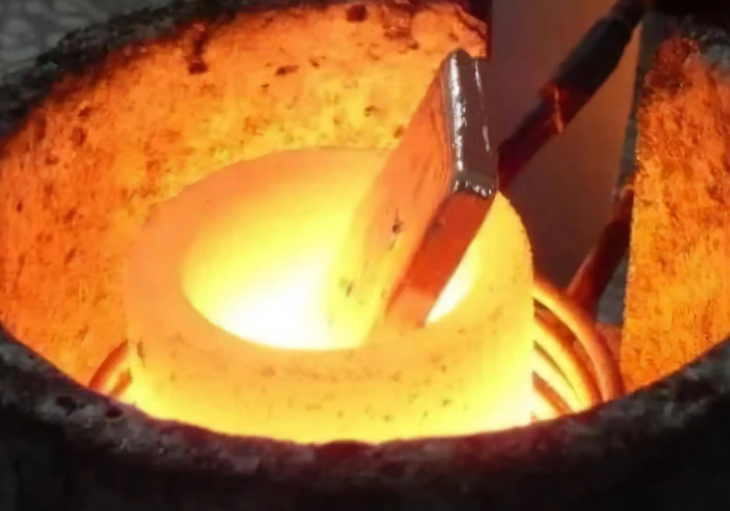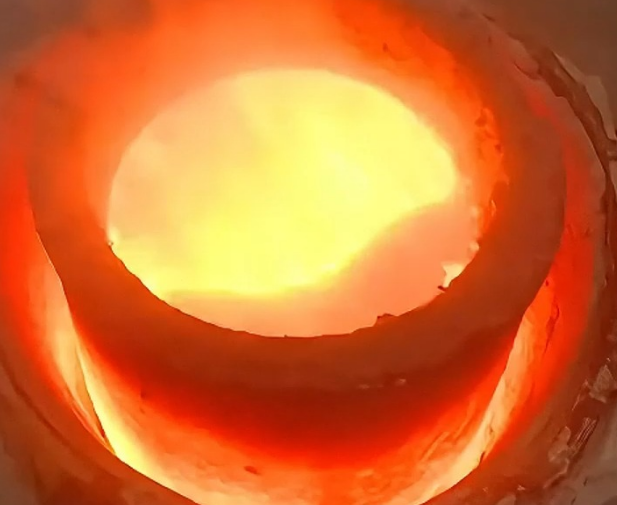Alumina melting point
The melting point of alumina is about 2054℃.
Alumina is an inorganic substance with the formula Al₂O₃, which is a high hardness compound. It has many excellent properties and has important applications in many fields.

Alumina is an ionic crystal that can be ionized at high temperatures. The reason why its melting point is high is mainly because the crystal structure of alumina is stable and the ionic bond strength is large. This high melting point makes alumina play a key role in the field of refractories. In high temperature environments, alumina can maintain strength, so it is widely used in a variety of refractory products, such as refractory panels, refractory bricks and thermal insulation materials.
The melting point of alumina is the temperature at which it changes from a solid state to a liquid state. The melting point is the balance point between the solid and liquid state of a substance. For aluminum oxide, its melting point is very high, about 2,050 degrees Celsius (3,722 degrees Fahrenheit). This means that at room temperature, alumina exists in a solid state. The high melting point is an important characteristic of alumina, which allows it to be used in high temperature environments.

In industry, alumina is usually prepared from bauxite and diaspore. For alumina with high purity requirements, chemical methods are generally used to prepare it. There are many homogeneous crystals in alumina, of which more than 10 are known, and there are three main crystal types, namely α-Al₂O₃, β-Al₂O₃, γ-Al₂O₃. At high temperatures above 1300 ° C, it is almost completely converted into α-Al₂O₃.
In the field of ceramics, alumina is also widely used. Especially in advanced or technical ceramics, it is widely used because it can improve the wear resistance and thermal stability of ceramics. Aluminum oxide powder is divided into calcined alumina and ordinary industrial alumina, the former is the key raw material for the production of antique bricks, the latter is used for the production of microcrystalline stone. In traditional glazes, alumina is often used as a whitening material.
In addition, alumina also performs well in the field of catalyst carriers. Because of its large specific surface area and abundant holes, spherical alumina powder is made into porous film filter, so that the catalyst and catalyst carrier made are superior in performance. At the same time, alumina is also widely used as an abrasive because of its excellent hardness and strength.

In short, alumina, with its high melting point and many excellent characteristics, has an indispensable position in many industrial fields.
The high melting point of alumina is determined by its crystal structure. Alumina has a hexagonal close-packed crystal structure, in which aluminum and oxygen ions have a dodecahedral coordination relationship. This structure gives alumina a high crystallization energy, resulting in a high melting point. In addition, the high melting point of alumina is also attributed to its strong ionic bonds. At high temperatures, ionic bonds need to overcome enormous energy to break, allowing alumina to retain its solid structure.
The high temperature characteristics of alumina's melting point make it ideal for use in high temperature environments. It has excellent high temperature resistance and can withstand corrosion and oxidation at high temperatures. This makes alumina ideal for many high temperature applications, such as refractories, high temperature ceramics and coatings. Its high melting point also makes alumina an important raw material for the preparation of other high-melting compounds and alloys.
What is the melting point of alumina
Basic properties of alumina
Alumina, whose chemical formula is Al₂O₃, is a common inorganic compound. It is a white solid, insoluble in water, has a high hardness, is the main raw material for smelting aluminum. What's more, alumina has a very high melting point.

The melting point of alumina
The melting point of alumina is 2054℃. This high melting point is due to the strong ionic bonds between the alumina molecules. An ionic bond is a chemical bond formed by electrostatic interaction between a positive and a positive cation. In aluminum oxide, the aluminum atom loses three electrons to become a cation, while the oxygen atom gains two electrons to become an anion, and they are tightly bound by an ionic bond. This strong ionic bond gives alumina a very high melting point.
Uses of alumina
Alumina is widely used in many fields because of its excellent properties such as high melting point, high hardness and corrosion resistance. For example, in the field of materials science, alumina is used as an important raw material for ceramics, glass, refractories, etc. In the chemical industry, it is an important raw material for preparing various aluminum salts; In addition, in the pharmaceutical, petroleum, chemical and other industries, alumina also has important applications.
Alumina production method
Alumina is mainly obtained by industrial process, the common methods are Bayer process and sintering process. Bayer process is to dissolve alumina in bauxite, and then through a series of chemical reactions and physical treatment, finally get alumina. The sintering rule is to mix bauxite with a certain amount of soda ash and lime, sintering at high temperature, and then through dissolution, filtration, precipitation and other steps to obtain alumina.
In general, alumina, as an important inorganic compound, has excellent properties such as high melting point and high hardness, and is widely used in many fields. Its melting point is as high as 2054 ° C, which is caused by the strong ionic bonds between the alumina molecules. By understanding the properties, uses and production methods of alumina, we can better understand and apply this important compound.